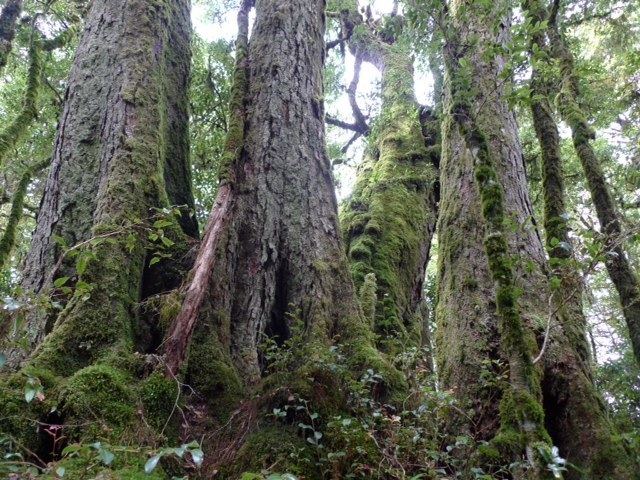Kingdom Plantae Family Nothofagaceae Scientific name Lophozonia moorei Rank Species | Order Fagales Genus Lophozonia Higher classification Lophozonia | |
 | ||
Similar Lophozonia cunninghamii, Nothofagus, Nothofagus antarctica, Lophozonia, Fuscospora gunnii | ||
Lophozonia moorei, commonly known as Antarctic beech, is an important Gondwana relict of the rainforests of the southern hemisphere. It occurs in wet, fire-free areas at high altitude in eastern Australia.
Contents
Taxonomy
Ferdinand von Mueller described the Antarctic beech in 1866, from material collected near the Bellinger River by C. Moore.
Once referred to as 'negrohead beech', but now as 'Antarctic beech' (not to be confused with its South American relative, Nothofagus antarctica) is an evergreen tree native to the eastern highlands of Australia. L. moorei was known as Nothofagus moorei prior to 2013. The change in name from Nothofagus to Lophozonia is controversial.
Description
These trees typically grow to 25 m (80 ft) tall and have large trunks to 1 m in diameter with scaly, dark brown bark. Maximum height is about 50 m. The leaves are simple and alternate, growing six centimeters long. The leaf color is dark green, with new growth brilliant red, or orange in spring. The tree is partially deciduous, dropping half its leaves in autumn. They are triangular with fine teeth. The plants have separate male and female flowers that occur on the same tree. The flowers are small and form inconspicuous clusters near the leaves towards the end of the branches. The fruit, produced from December to February, is a small woody structure of four prickly valves. Each fruit contains three small winged nuts.
Complicated root structures are frequently exhibited. These roots would once have been soil-covered, but have been exposed over the ages by erosion, and covered in moss and lichen. Many of the trees have multiple trunks emanating from a crown, formed by this root structure. Fires are detrimental to the survival of the Antarctic Beech which, unlike many other Australian plants, is slow to recover from fire.
Distribution and habitat
The Antarctic beech grows in cool temperate rainforests from the Barrington Tops plateau in New South Wales, north to the Lamington Plateau and Springbrook Plateau, in southern Queensland, between altitudes of 500 m and 1550 m. It occurs in temperate to cool temperatures and with occasional snowfalls. Antarctic Beech has been recorded at four sites in the Comboyne area, growing in cool stream side rainforests at elevations ranging from 570 to 630 metres above sea level. Lophozonia moorei achieves its finest development at Werrikimbe National Park and Mount Banda Banda.
History
Many individuals are extremely old, some about 12,000 years. And at one time it was believed that the Eastern Australian populations could not reproduce in present-day conditions, except by suckering (asexual reproduction), being remnant forest from a cooler time. It has since been shown that sexual reproduction may occur, but distribution in cool, isolated high-altitude environments at temperate and tropical latitudes is consistent with the theory that the species was more prolific in a cooler age. The pattern of distribution around the southern Pacific Ocean rim has fed speculation that the dissemination of the genus dates to the time when Antarctica, Australia and South America were connected, the theoretical common land-mass referred to as Gondwana.
It is an ornamental tree and cultivated specimens tolerate −7 °C (19 °F), though wild plants growing on Barrington Tops have withstood record low temperatures of −17 °C (1 °F), no source provenance have been selected from there and other mountains, highlands or plateaus for cultivation.
